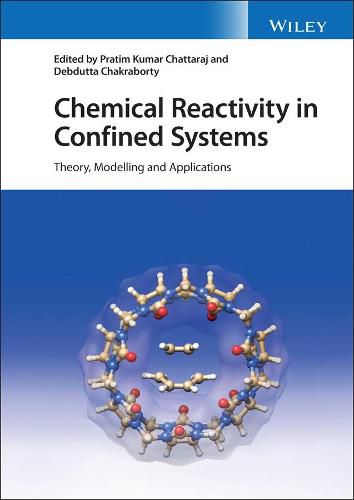Readings Newsletter
Become a Readings Member to make your shopping experience even easier.
Sign in or sign up for free!
You’re not far away from qualifying for FREE standard shipping within Australia
You’ve qualified for FREE standard shipping within Australia
The cart is loading…






An insightful analysis of confined chemical systems for theoretical and experimental scientists
Chemical Reactivity in Confined Systems: Theory and Applications presents a theoretical basis for the molecular phenomena observed in confined spaces. The book highlights state-of-the-art theoretical and computational approaches, with a focus on obtaining physically relevant clarification of the subject to enable the reader to build an appreciation of underlying chemical principles.
The book includes real-world examples of confined systems that highlight how the reactivity of atoms and molecules change upon encapsulation. Chapters include discussions on recent developments related to several host-guest systems, including cucurbit[n]uril, ExBox+4, clathrate hydrates, octa acid cavitand, metal organic frameworks (MOFs), covalent organic frameworks (COFs), zeolites, fullerenes, and carbon nanotubes. Readers will learn how to carry out new calculations to understand the physicochemical behavior of confined quantum systems.
Topics covered include:
A thorough introduction to global reactivity descriptors, including electronegativity, hardness, and electrophilicity
An exploration of the Fukui function, as well as dual descriptors, higher order derivatives, and reactivity through information theory
A practical discussion of spin dependent reactivity and temperature dependent reactivity
Concise treatments of population analysis, reaction force, electron localization functions, and the solvent effect on reactivity
Perfect for academic researchers and graduate students in theoretical and computational chemistry and confined chemical systems, Chemical Reactivity in Confined Systems: Theory and Applications will also earn a place in the libraries of professionals working in the areas of catalysis, supramolecular chemistry, and porous materials.
$9.00 standard shipping within Australia
FREE standard shipping within Australia for orders over $100.00
Express & International shipping calculated at checkout
An insightful analysis of confined chemical systems for theoretical and experimental scientists
Chemical Reactivity in Confined Systems: Theory and Applications presents a theoretical basis for the molecular phenomena observed in confined spaces. The book highlights state-of-the-art theoretical and computational approaches, with a focus on obtaining physically relevant clarification of the subject to enable the reader to build an appreciation of underlying chemical principles.
The book includes real-world examples of confined systems that highlight how the reactivity of atoms and molecules change upon encapsulation. Chapters include discussions on recent developments related to several host-guest systems, including cucurbit[n]uril, ExBox+4, clathrate hydrates, octa acid cavitand, metal organic frameworks (MOFs), covalent organic frameworks (COFs), zeolites, fullerenes, and carbon nanotubes. Readers will learn how to carry out new calculations to understand the physicochemical behavior of confined quantum systems.
Topics covered include:
A thorough introduction to global reactivity descriptors, including electronegativity, hardness, and electrophilicity
An exploration of the Fukui function, as well as dual descriptors, higher order derivatives, and reactivity through information theory
A practical discussion of spin dependent reactivity and temperature dependent reactivity
Concise treatments of population analysis, reaction force, electron localization functions, and the solvent effect on reactivity
Perfect for academic researchers and graduate students in theoretical and computational chemistry and confined chemical systems, Chemical Reactivity in Confined Systems: Theory and Applications will also earn a place in the libraries of professionals working in the areas of catalysis, supramolecular chemistry, and porous materials.